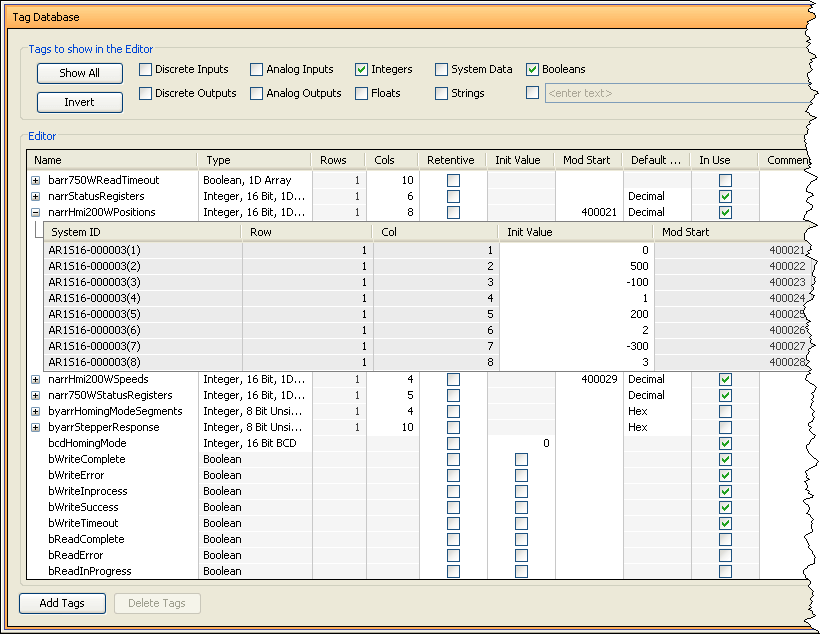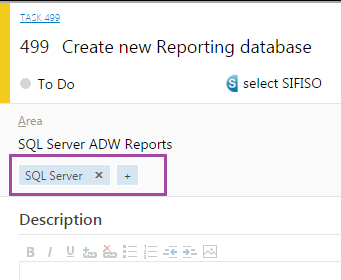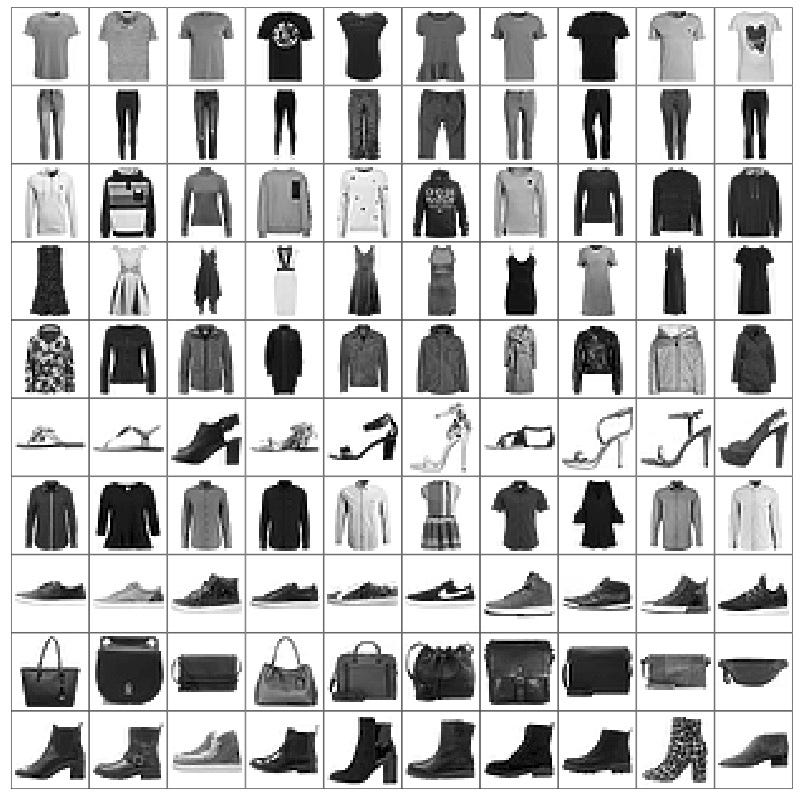45 tf dataset get labels
tfdf.keras.pd_dataframe_to_tf_dataset - TensorFlow If "weight" is provided, separate it as a third channel in the tf.Dataset (as expected by Keras). If "task" is provided, ensure the correct dtype of the label. If the task is a classification and the label is a string, integerize the labels. In this case, the label values are extracted from the dataset and ordered lexicographically. tf.data.Dataset select files with labels filter Code Example tf.dataset from tensor slices; tensorflow next data ; convert jpeg and xml labelimgto tf.data.dataset; tf.data.dataset.filter file with specific class; how to create batches in tensorflow; tf.data.dataset get labels; tf dataset filter files ; tf.data.dataset sparse dscipy; convert x,y to batch dataset tensorflow; training_data.map tensorlfow
Using the tf.data.Dataset | Tensor Examples # create the tf.data.dataset from the existing data dataset = tf.data.dataset.from_tensor_slices( (x_train, y_train)) # by default you 'run out of data', this is why you repeat the dataset and serve data in batches. dataset = dataset.repeat().batch(batch_size) # train for one epoch to verify this works. model = get_and_compile_model() …

Tf dataset get labels
How to filter Tensorflow dataset by class/label? | Data Science and ... Hey @bopengiowa, to filter the dataset based on class labels we need to return the labels along with the image (as tuples) in the parse_tfrecord() function. Once that is done, we could filter the required classes using the filter method of tf.data.Dataset. Finally we could drop the labels to obtain just the images, like so: tensorflow tutorial begins - dataset: get to know tf.data quickly def train_input_fn( features, labels, batch_size): """An input function for training""" # Converts the input value to a dataset. dataset = tf. data. Dataset. from_tensor_slices ((dict( features), labels)) # Mixed, repeated, batch samples. dataset = dataset. shuffle (1000). repeat (). batch ( batch_size) # Return data set return dataset Data preprocessing using tf.keras.utils.image_dataset_from_directory Let's say we have images of different kinds of skin cancer inside our train directory. We want to load these images using tf.keras.utils.images_dataset_from_directory () and we want to use 80% images for training purposes and the rest 20% for validation purposes. We define batch size as 32 and images size as 224*244 pixels,seed=123.
Tf dataset get labels. How to get the labels from tensorflow dataset - Stack Overflow How to get the labels from tensorflow dataset Ask Question 0 ds_test = tf.data.experimental.make_csv_dataset ( file_pattern = "./dfj_test/part-*.csv.gz", batch_size=batch_size, num_epochs=1, #column_names=use_cols, label_name='label_id', #select_columns= select_cols, num_parallel_reads=30, compression_type='GZIP', shuffle_buffer_size=12800) tf.data: Build TensorFlow input pipelines | TensorFlow Core Refer to the documentation for tf.data.Dataset for a complete list of transformations. The Dataset object is a Python iterable. This makes it possible to consume its elements using a for loop: dataset = tf.data.Dataset.from_tensor_slices( [8, 3, 0, 8, 2, 1]) dataset tfds.visualization.show_examples | TensorFlow Datasets TensorFlow Datasets Fine tuning models for plant disease detection This function is for interactive use (Colab, Jupyter). It displays and return a plot of (rows*columns) images from a tf.data.Dataset. Usage: ds, ds_info = tfds.load('cifar10', split='train', with_info=True) fig = tfds.show_examples(ds, ds_info) python - Get labels from dataset when using tensorflow image_dataset ... The documentation says the function returns a tf.data.Dataset object. If label_mode is None, it yields float32 tensors of shape (batch_size, image_size [0], image_size [1], num_channels), encoding images (see below for rules regarding num_channels).
How to get the label distribution of a `tf.data.Dataset` efficiently? The naive option is to use something like this: import tensorflow as tf import numpy as np import collections num_classes = 2 num_samples = 10000 data_np = np.random.choice(num_classes, num_samples) y = collections.defaultdict(int) for i in dataset: cls, _ = i y[cls.numpy()] += 1 passing labels=None to image_dataset_from_directory doesn't work ... import tensorflow as tf train_images = tf.keras.preprocessing.image_dataset_from_directory( 'images', labels=None, ) ... If you wish to infer the labels from the subdirectory names in the target directory, pass `labels="inferred"`. If you wish to get a dataset that only contains images (no labels), pass `labels=None`. The text was updated ... How to filter the dataset to get images from a specific class? #1923 Is it possible to make predicate function more generic, so that I can keep N number of classes and filter out the rest of the classes? or is there any other way to filter the dataset to get images from a specific class? Environment information. Operating System: Distribution: Anaconda; Python version: <3.7.7> Tensorflow 2.1; tensorflow_datasets ... TensorFlow Datasets By using as_supervised=True, you can get a tuple (features, label) instead for supervised datasets. ds = tfds.load('mnist', split='train', as_supervised=True) ds = ds.take(1) for image, label in ds: # example is (image, label) print(image.shape, label)
How to convert my tf.data.dataset into image and label arrays #2499 A tf.data dataset. Should return a tuple of either (inputs, targets) or (inputs, targets, sample_weights). A generator or keras.utils.Sequence returning (inputs, targets) or (inputs, targets, sample_weights). A more detailed description of unpacking behavior for iterator types (Dataset, generator, Sequence) is given below. Keras tensorflow : Get predictions and their associated ground truth ... I am new to Tensorflow and Keras so the answer is perhaps simple, but I have a batched and prefetched tensorflow dataset (of type tf.data.TFRecordDataset) which consists in images and their label (int type) , and I apply a classification model on it. Multi-label Text Classification with Tensorflow — Vict0rsch Processing the labels. We need to read the one-hot encoded text file and turn it into tensors: def one_hot_multi_label(string_one_hot): # split on ", " and get dense Tensor vals = tf.string_split( [string_one_hot], split_label_token).values # convert to numbers numbs = tf.string_to_number(vals) return tf.cast(numbs, tf.int64) labels_dataset ... tfds.features.ClassLabel | TensorFlow Datasets value: Union[tfds.typing.Json, feature_pb2.ClassLabel] ) -> 'ClassLabel' FeatureConnector factory (to overwrite). Subclasses should overwrite this method. This method is used when importing the feature connector from the config. This function should not be called directly. FeatureConnector.from_json should be called instead.
tf.data.Dataset.from_tensor_slices() - GeeksforGeeks Syntax : tf.data.Dataset.from_tensor_slices(list) Return : Return the objects of sliced elements. Example #1 : In this example we can see that by using tf.data.Dataset.from_tensor_slices() method, we are able to get the slices of list or array.
tf.data: Build Efficient TensorFlow Input Pipelines for Image Datasets ... 3. Build Image File List Dataset. Now we can gather the image file names and paths by traversing the images/ folders. There are two options to load file list from image directory using tf.data ...
How to use Dataset in TensorFlow - Towards Data Science dataset = tf.data.Dataset.from_tensor_slices (x) We can also pass more than one numpy array, one classic example is when we have a couple of data divided into features and labels features, labels = (np.random.sample ( (100,2)), np.random.sample ( (100,1))) dataset = tf.data.Dataset.from_tensor_slices ( (features,labels)) From tensors
A hands-on guide to TFRecords - Towards Data Science To get these {image, label} pairs into the TFRecord file, we write a short method, taking an image and its label. Using our helper functions defined above, we create a dictionary to store the shape of our image in the keys height, width, and depth — w e need this information to reconstruct our image later on.
How to use tf.data.Dataset.map() function in TensorFlow - gcptutorials Lets normalize the images in dataset using map () method , below are the two steps of this process. def normalize_image(image, label): return tf.cast (image, tf.float32) / 255., label. Apply the normalize_image function to the dataset using map () method. Lets analyze the pixel values in a sample image from the dataset after applying map () method.
Datasets - TF Semantic Segmentation Documentation dataset/ labels.txt test/ images/ masks/ train/ images/ masks/ val/ images/ masks/ or use. dataset/ labels.txt images/ masks/ The labels.txt should contain a list of labels separated by newline [/n]. For instance it looks like this: background car pedestrian Create TFRecord
TFRecords Explained. Working with TFRecords with an… | by Girija ... Example 1: CSV dataset to tfrecords The dataset taken is a csv file of Cars available here. It contains 8 columns, column 1 contains strings, column 3 and 8 contains integers and others contain floats. A map is created with the column names and their types as keys and values respectively.
tf.data.dataset get labels Code Example - codegrepper.com python pandas get labels torch tensor to pandas dataframe view whole dataset in python dataframe auto detect data types dataframe to tf data dataframe x y to geodataframe extract label from tf data label encode one column pandas select features and label from df dataset.shuffle dataset tensorflow tf.data.dataset example
Multi-Label Image Classification in TensorFlow 2.0 model.compile(optimizer=tf.keras.optimizers.Adam(learning_rate=LR), loss=macro_soft_f1, metrics=[macro_f1]) Now, you can pass the training dataset of (features, labels) to fit the model and indicate a seperate dataset for validation. The performance on the validation set will be measured after each epoch.
Data preprocessing using tf.keras.utils.image_dataset_from_directory Let's say we have images of different kinds of skin cancer inside our train directory. We want to load these images using tf.keras.utils.images_dataset_from_directory () and we want to use 80% images for training purposes and the rest 20% for validation purposes. We define batch size as 32 and images size as 224*244 pixels,seed=123.
tensorflow tutorial begins - dataset: get to know tf.data quickly def train_input_fn( features, labels, batch_size): """An input function for training""" # Converts the input value to a dataset. dataset = tf. data. Dataset. from_tensor_slices ((dict( features), labels)) # Mixed, repeated, batch samples. dataset = dataset. shuffle (1000). repeat (). batch ( batch_size) # Return data set return dataset
How to filter Tensorflow dataset by class/label? | Data Science and ... Hey @bopengiowa, to filter the dataset based on class labels we need to return the labels along with the image (as tuples) in the parse_tfrecord() function. Once that is done, we could filter the required classes using the filter method of tf.data.Dataset. Finally we could drop the labels to obtain just the images, like so:





![[러닝 텐서플로]Chap04 - 합성곱 신경망 CNN](https://t1.daumcdn.net/cfile/tistory/99DAA3405B1AC44D0C)






![How to load a custom dataset with tf.data [Tensorflow] - YouTube](https://i.ytimg.com/vi/bqeUmLCgsVw/maxresdefault.jpg)
![[TensorFlow 2.x]Easy-peasy importing dataset on new TensorFlow | by A Ydobon | Medium](https://miro.medium.com/max/1200/1*g36WfuN0j5xwaz7udMC9bw.jpeg)

Post a Comment for "45 tf dataset get labels"